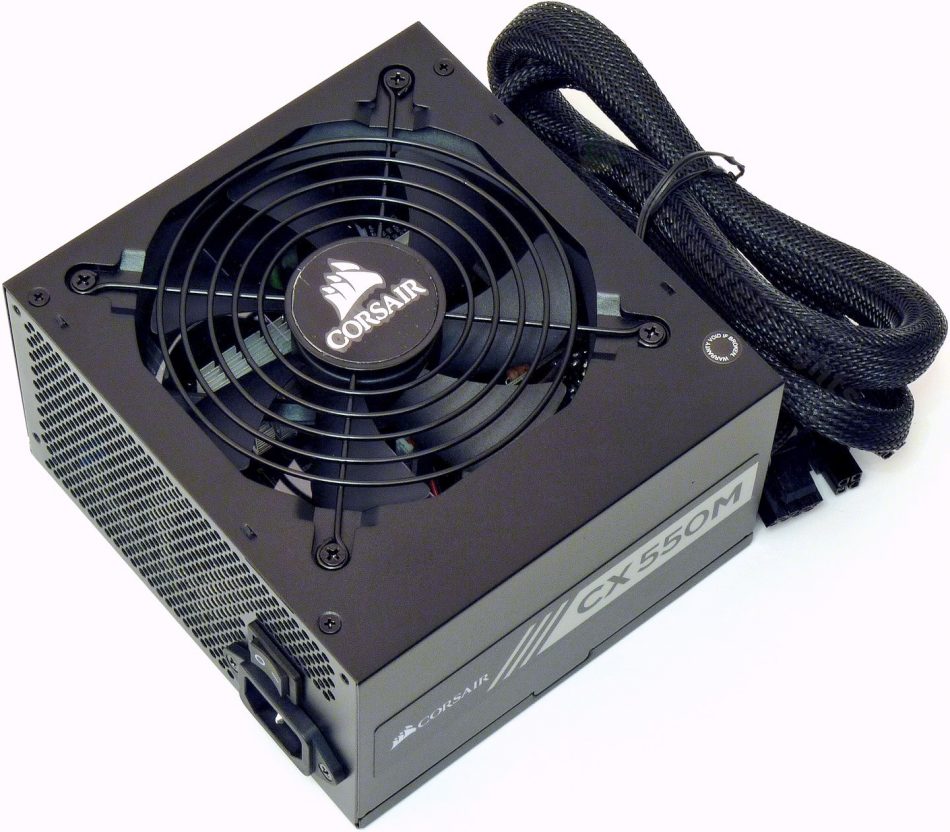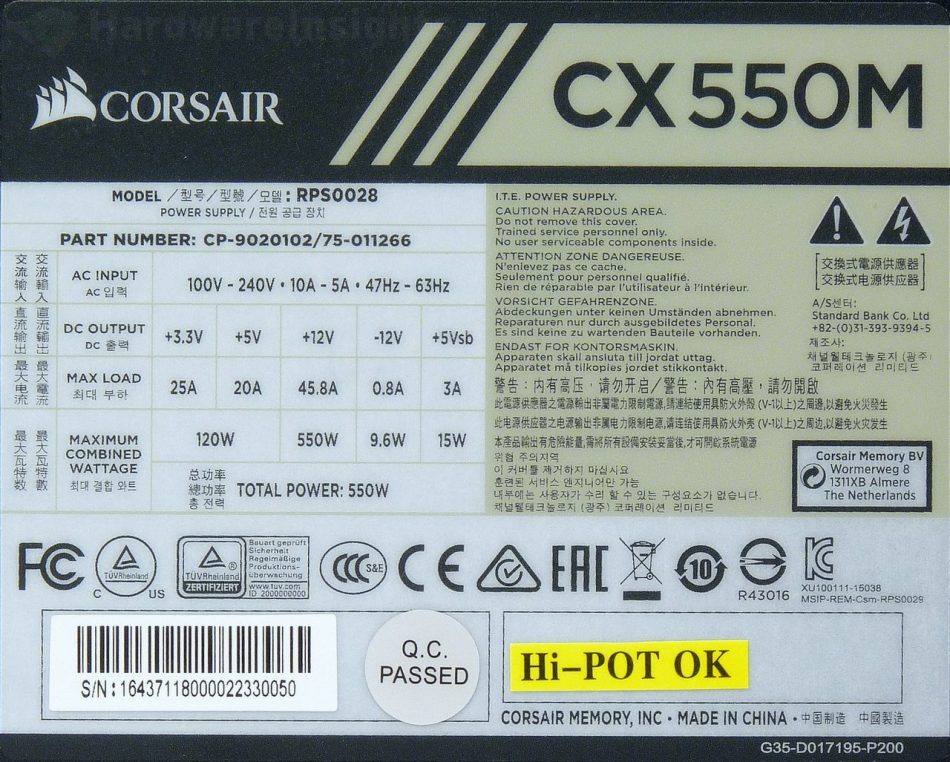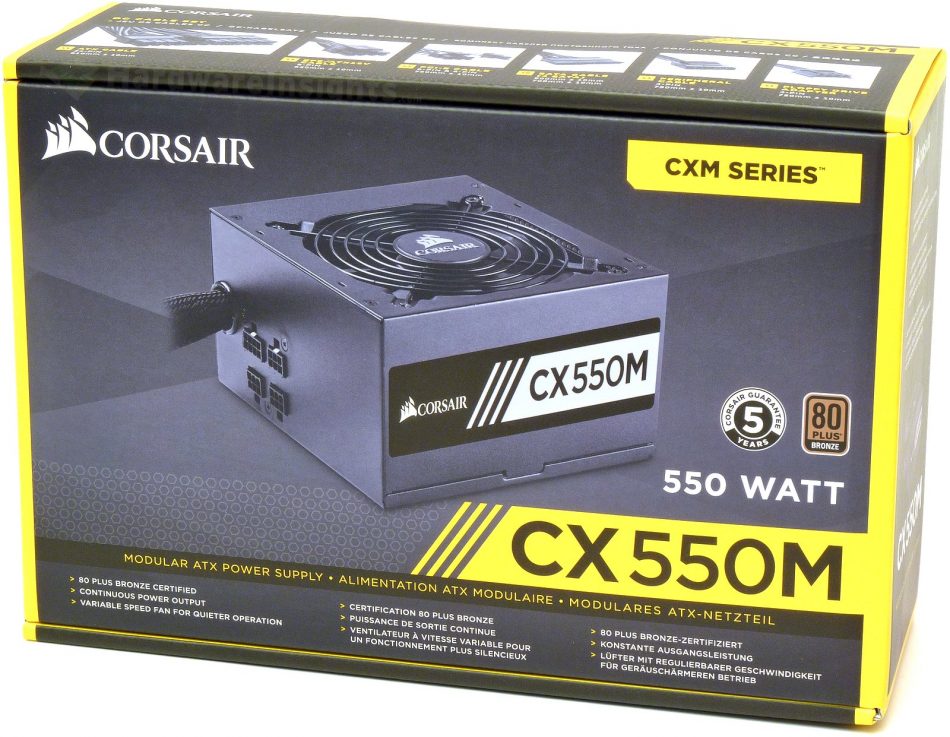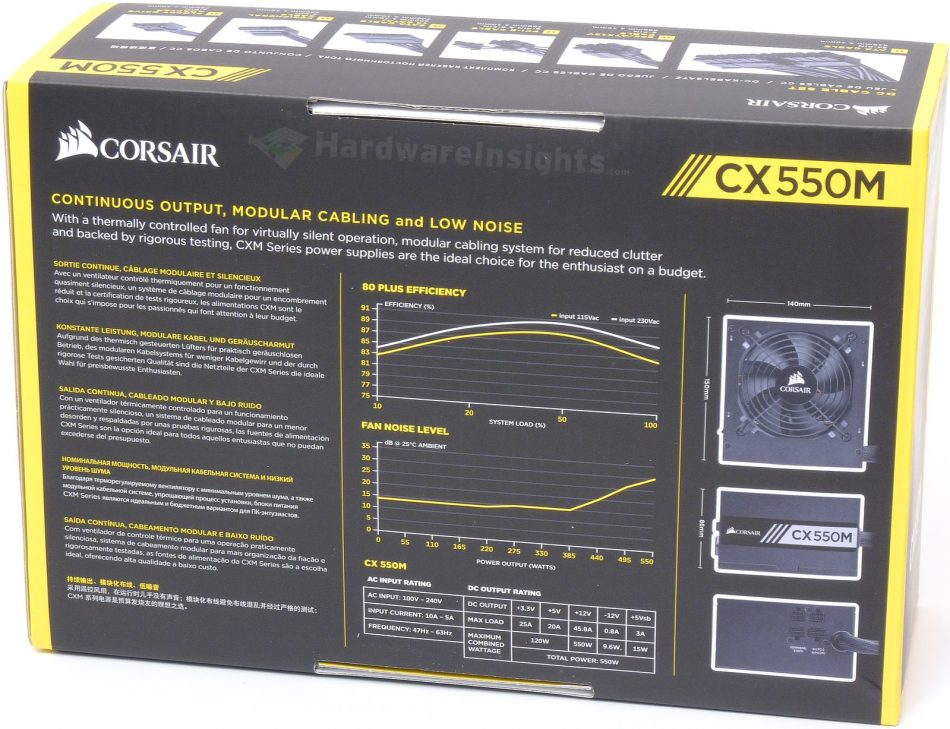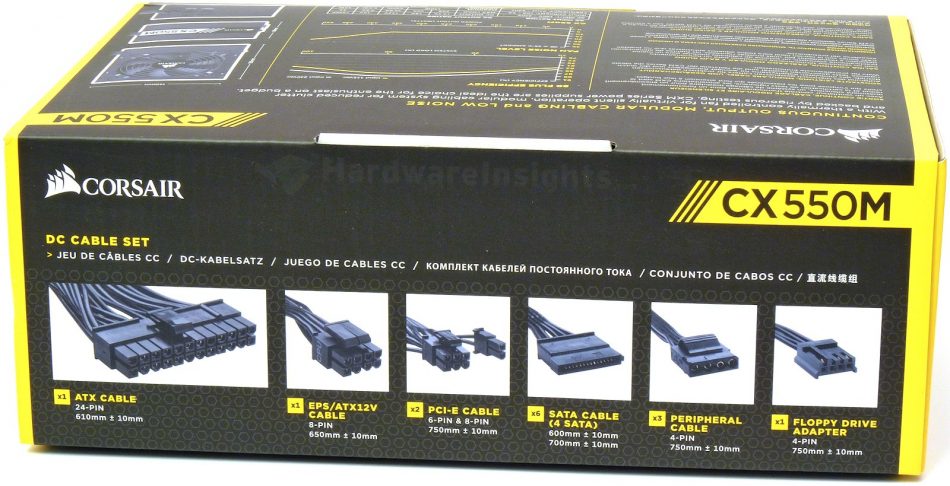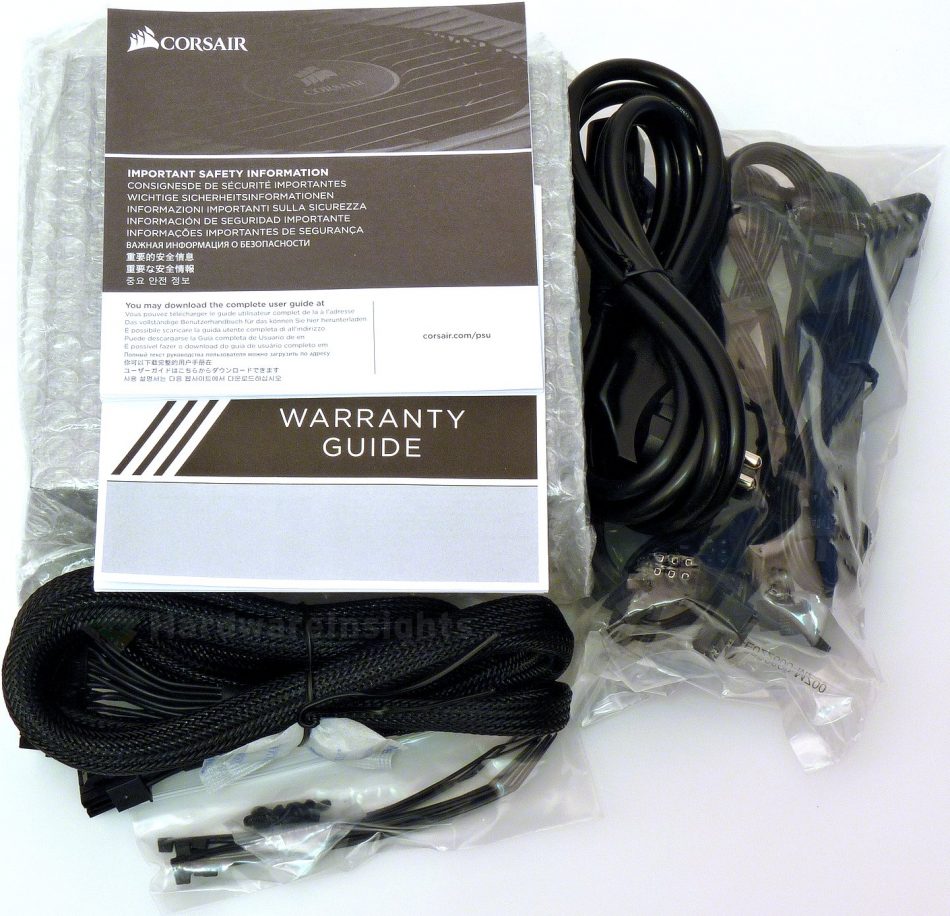Contents
- 1Introducing the Corsair CX550M
- 1.1Packaging and accessories
- 2Connectors & cabling
- 2.1Casing & cooling
- 3Input filtering
- 4Primary side
- 4.1+5 V stand-by rail
- 5Secondary side
- 5.1Build quality
- 6Load testing
- 6.1Loading +5 V SB
- 6.2Voltage hold-up time
- 6.3Combined loading
- 6.4Combined loading ripple
- 6.5Crossloading, overloading
- 6.6Crossloading, overloading ripple
- 6.7Fan speed, temperatures and noise
- 7Conclusion and evaluation
- 7.1Bonus
- 7.2Thanks
- 7.3Discussion
Introducing the Corsair CX550M
The semi-modular Corsair CXM series has been with us for quite some time now. It has seen several revisions with varied platforms, and the current version came to the market almost a year ago and brought with it a longer warranty (five years as opposed to the previous three years) as well as a more advanced platform. After some effort, I’ve obtained the CX550M (RPS0028, or CP-9020102), a 550W model from this series. This one sells for less than 1900 CZK (under 60 euros in Germany, 93 AUD in Australia or 60 USD in the US) which easily puts us into mainstream. Like the previous revision, it’s also made by Channel Well Technology. It is also 80 PLUS Bronze certified (@115 V).
This new version comes with only a single +12v transformer output as has already become standard in the high-end segment, and is now slowly becoming more prevalent in the mainstream. This rail itself can supply the full power output of 550 W. As is then usual, the +3.3/+5 V rails then make use of DC–DC buck converters and provide 120 W combined (25 A/+3.3 V and 20 A/+5 V). What is also interesting with this unit is the quite powerful stand-by supply (3 A) and also the −12V rail (0.8 A). According to Corsair, from advanced types of protection the CX550M only comes with OPP (beyond basic SCP, UVP, OVP).
Packaging and accessories
The box itself is medium in size. It uses the common as-of-lately black/yellow color scheme for the color printing, as well as the all too familiar layout. On the front side we can see picture of the unit and some basic information.
The rear side displays photos accompanied with dimensions (notice that the unit is only 140 mm deep), a power distribution table and two diagrams. Besides the efficiency diagram there’s also a fan noise level diagram, which states that the fan should spin slowly up to slightly under 400 W and than increase to up to its rated speed.
On the top side we can see pictures of the connectors. As this is more of a budget-oriented unit, it only comes in a bubble wrap bag for protection.
As for the extras, we have a power cord, all the modular cables, then some screws, a manual and warranty guide, and ten zip ties. I think it’s worth half a point.
